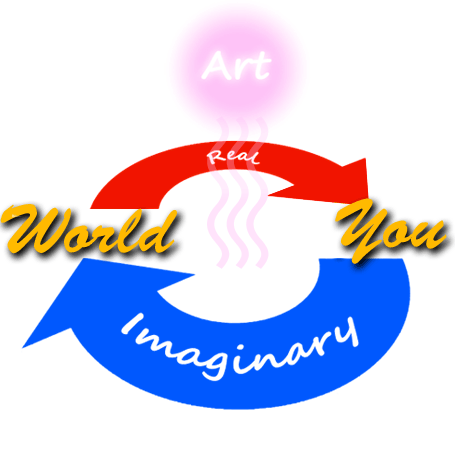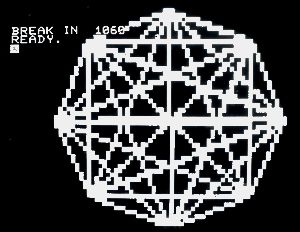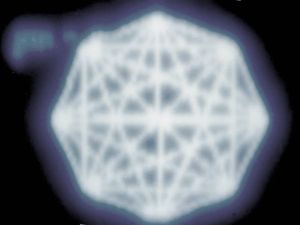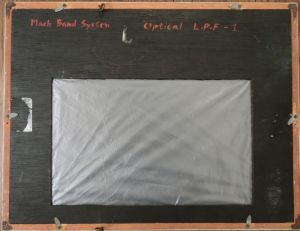

Imaginary Circuit is an imaginary art engineering.
This is a retrospective exhibition that traces its theory and practice.
First of all, I would like to boldly summarize it as follows.
This is the science of Zen.
The word "Zen" has a wonderful aura about it.
To tell the truth, I do not know the exact meaning of this word, but such a misunderstanding is the essence of the art that I am going to develop.



In 1979, as a high school student at the time, I was fascinated with computer graphics using a computer called PET2001 by COMMODORE. The computer at the time had an incredibly low screen resolution of 80 x 50 pixels, so straight lines ended up looking like rickety blocks. (Above)
However, I discovered that this situation could be dramatically improved with some ingenuity. This is the result. (Middle)
The text is now completely unreadable, but the straight lines seem much cleaner.
The idea was to make a hole in a wooden board like a window, cover it with a semi-transparent sheet, and look at the screen through the frosted glass-like window. (Below)
In short, the blurring of the image seems to be the cause of the problem, and the same effect can be confirmed by looking at the original wobbly image through thin air.
The strange thing here is that the "blurring" process, which destroys information, gives the impression that information has been restored. Even if the filtered image is measured by a machine, there is no reason to believe that the information that indicates a straight line has increased. If the straight line looks better after this process, it is probably because the image of the straight line in your mind is more easily projected.
At first glance, the process of "looking at something" seems tAt first glance, the process of looking at something is passive, but this exploration begins when we discover the part that actively transmits information.